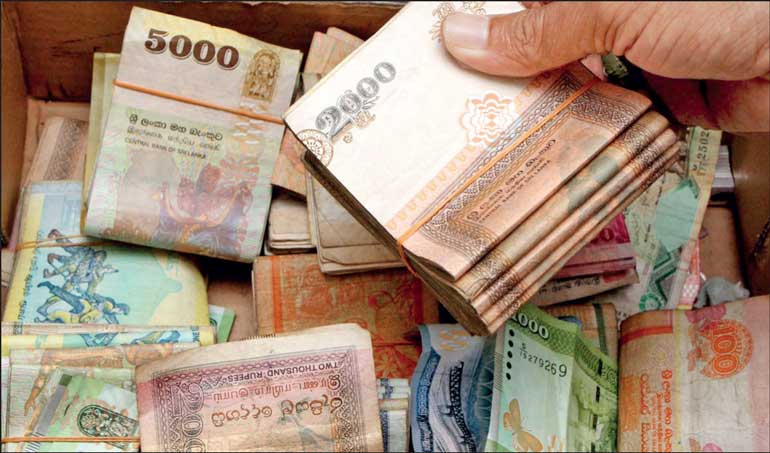Friday Nov 21, 2025
Friday Nov 21, 2025
Friday, 17 March 2023 00:10 - - {{hitsCtrl.values.hits}}

CGIR’s new inclusions in the latest circular is contrary to the law made by the Parliament and amounts to violation of the cardinal principle enshrined in the Constitution that the Parliament has full control over public finance
 On 22 December the Commissioner General of Inland Revenue (CGIR) issued the guidelines for employers on deducting Advance Personal Income Tax (APIT) from employment income (SEC/2022/E/04) and the
On 22 December the Commissioner General of Inland Revenue (CGIR) issued the guidelines for employers on deducting Advance Personal Income Tax (APIT) from employment income (SEC/2022/E/04) and the
‘Quantification of values for non cash benefits in calculating Employment Income (SEC/2022/E/05). (Refer article titled “Is 2023 a Year of Taxation? – Part 1” published on 5 January 2023 for details on these circulars and APIT).
The CGIR issued a revised circular on 7 February 2023 replacing the earlier issued circular on non-cash benefits with a revised title
'Quantification of certain amounts for benefits in calculating employm e n t i n c o m e ( S E C / 2 0 2 2 / E / 0 5 (Revised)).'
This revised circular issued on 7 February is effective from 1 January 2023 and the benefits covered in this circular are broadly as follows:
While many of the above benefits were covered in the previous noncash benefit circular issued on 22 December 2022, the new circular modified the quantification provided by the CGIR. The latest circular also included three new additional benefits and this article only focuses on such new inclusions to the circular.
New inclusions to the circular
In the revised circular dated 7 February, there are three new introductions to provide relief to those who are with an entitlement for a vehicle, fuel or communication facilities due to a circular, directive or regulations issued on that behalf by the Government.
As per this inclusion where an employer provides a vehicle or pay an amount in lieu of providing a vehicle (fully or partly) for official use to that employee, under any Circular, Directive or Regulation issued in that behalf by the Government, the value of the benefit will be 25% of the cost incurred by the employer, for the purposes of calculating tax on employment. This same 25% upper ceiling is applied for fuel and communication facility where such facility is an entitlement to the employees under any Circular, Directive or Regulation issued in that behalf by the Government.
Some or most of the persons who qualify under this scheme opt to receive a cash allowance in lieu of vehicle/fuel/communication facility. By the new stipulation the CGIR is attempting to confine the tax exposure of the cash allowance to 25% of the allowance. Accordingly, for a specific category of employees (as described above) if a vehicle/fuel/communication allowance of Rs. 100,000 is paid, only Rs. 25,000 (25%) will be considered as profits from employment on which the applicable tax will be deducted by the employer.
Profits from employment
Every employee who is rendering services to an employer is entitled for a compensation. A compensation package may involve cash payments as well as in kind benefits (such as vehicle, fuel, residence, etc.). Both these elements of the compensation package received in lieu of office of employment is termed as ‘profits of employment’ in the tax terminology.
All ‘Profits from Employment’ subject to specific exclusions and exemptions (in S. 5 (3) and the Third Schedule to the Act respectively) provided in the Act is liable to Income Tax (under APIT). In relation to cash payments the computation of the tax liability is not complex. However, in relation to non-cash benefits there are specific rules under the Inland Revenue Act (IRA). In order to attribute values for non-cash benefits for calculation of taxes, the Inland Revenue Act makes a provision for the CGIR to quantify the amounts under S.27 of the IRA and if no specification is made, then the market value of the non-cash benefit to be considered.
The CGIR’s power stemming from the IRA is confined only to attribute monetary values for non-cash benefits given by the employer to the employee for income tax purposes on account of personal benefit /private usage. To be more precise the IRA does not permit or empower the CGIR to increase or reduce tax liability of an employee in relation to cash receipts received from the employer. Increase or decrease of the tax liability of a person could be carried out only by the Parliament.
Therefore, CGIR’s three stipulations in relation to reduction of vehicle allowance, fuel allowance and communication allowance received to mere 25% of the total amount received for income tax purposes is beyond his powers (as per the legal terminology ultra vires his powers).
It is significant to note that S.5 (2) (b) of the IRA enacted by the Parliament clearly stipulates that all allowances amount to profits from employment and should be subject to income tax without any reduction. The said section is reproduced below.
S.5 (2) (b) payments of personal allowance, including any cost of living, subsistence, rent, entertainment or travel allowance;
Hence the CGIR’s new inclusions in the latest circular is contrary to the law made by the Parliament and amounts to violation of the cardinal principle enshrined in the Constitution that the Parliament has full control over public finance (Art. 152 of the Constitution).
In addition, the aforementioned changes introduced also raises another thought in the minds of many. Shouldn’t the same rule be extended to the private sector and all other public sector employee who are being deprived of this concession? (i.e. the allowance being taxed subject to a ceiling of 25% of the allowance). The Constitution of the country promises equality before the law for all citizens under Article 12 of the Constitution. The three latest inclusions made in the circular issued on 7 February 2023 by the CGIR need to be revisited with due consideration to areas highlighted above.
(The writer is Principal – Tax and Regulatory, KPMG.)